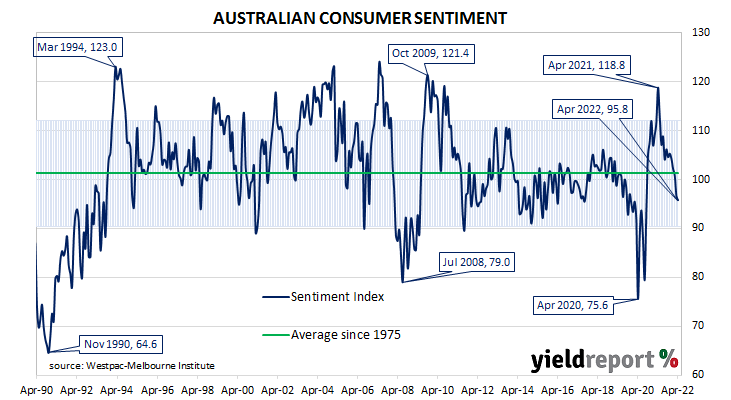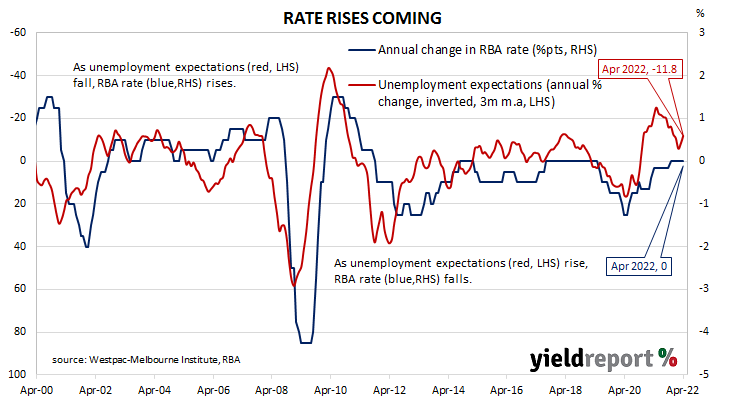Summary: Household sentiment deteriorates in April; interest rates, inflation, weather unnerve consumers; three of five sub-indices lower; respondents less concerned by prospects of unemployment.
After a lengthy divergence between measures of consumer sentiment and business confidence in Australia which began in 2014, confidence readings of the two sectors converged again in mid-July 2018. Both readings then deteriorated gradually in trend terms, with consumer confidence leading the way. Household sentiment fell off a cliff in April 2020 but, after a few months of to-ing and fro-ing, it then staged a full recovery. However, recent readings have deteriorated significantly, unlike readings from the business sector.
According to the latest Westpac-Melbourne Institute survey conducted in the first week of April, household sentiment has again deteriorated. Their Consumer Sentiment Index eased from March’s reading of 96.6 to 95.8 in April. The latest figure is noticeably lower than the long-term average reading of just over 101.
“There is further evidence that interest rates, inflation and weather continued to unnerve consumers in the current survey,” said Westpac Chief Economist Bill Evans.
Any reading of the Consumer Sentiment Index below 100 indicates the number of consumers who are pessimistic is greater than the number of consumers who are optimistic.
Domestic Treasury bond yields fell with the exception of those at the ultra-long end on the day, generally following the lead of US Treasury yields in overnight trading. By the close of business, the 3-year ACGB yield had shed 7bps to 2.69%, the 10-year had slipped 1bp to 3.13% while the 20-year yield finished 3bps higher at 3.44%.
In the cash futures market, expectations of any material change in the actual cash rate, currently at 0.06%, eased a touch. At the end of the day, contract prices implied the cash rate would not exceed the RBA’s 0.10% target rate until May and then rise to 0.89% by August. February 2023 contracts implied a cash rate of 2.215%.
Three of the five sub-indices registered lower readings, with the “Time to buy a major household item” sub-index posting the largest monthly percentage loss. The reading of the “Family finances versus a year ago” sub-index also deteriorated noticeably.
The report contained some positives. “Optimism on the outlook though remains, with unemployment expectations falling to their second lowest level since the mid-1990s…” said NAB senior economist Tapas Strickland.
The Unemployment Expectations index, formerly a useful guide to RBA rate changes, declined from 101.8 to 99.2. Lower readings result from fewer respondents expecting a higher unemployment rate in the year ahead.



